
Dr Greg Dooley
Digital Marketing Manager
Content Specialist in Office Design & Build

/ 12 Office Fit Out Ideas & Tips to Boost Productivity
There are numerous indicators to suggest that the way we design and fit out office spaces impacts productivity. A global study of 18000 desk workers, for instance, found that 82% of workers felt more productive when they were happy and engaged at work, while 22% noted that ‘too much chaos’ at work negatively impacted their ability to be productive.
Fitting out offices to boost productivity takes careful planning. The right design can transform an office from a simple workplace into a dynamic space that fosters creativity, boosts morale, and ultimately drives business success. Below are 12 ideas, tips and insights for creating a productive workplace.
Contents
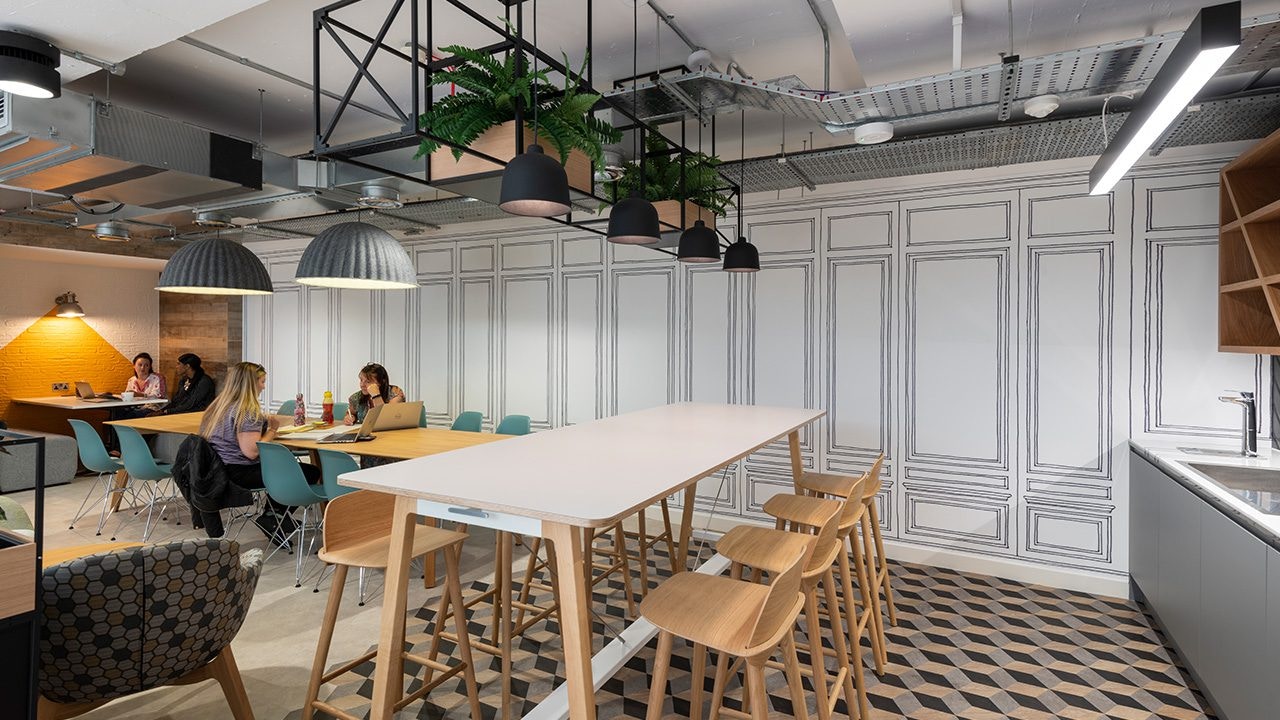
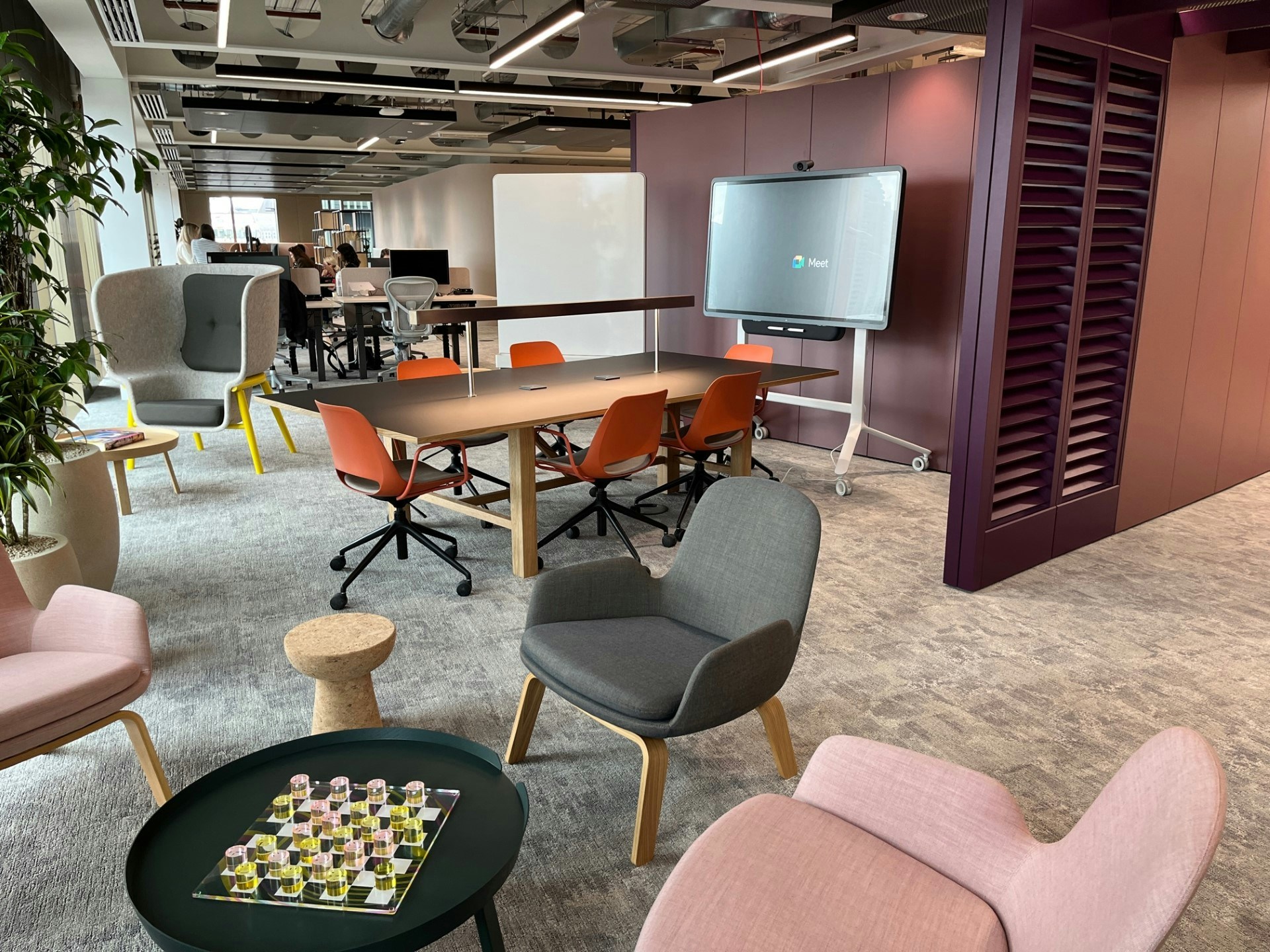
The design of offices to accommodate flexible working paterns has become an essential aspect of office fit-out projects. A 2023 study by the CIPD shows a substantial increase in flexible and hybrid working arrangements, with approximately 60% of employees now engaging in some form of remote work.
The study notes that the demand for remote working has risen sharply, with 46% of employers observing a higher number of requests for it. Furthermore, it suggests that nearly two-fifths (38%) of organisations have reported a boost in productivity due to hybrid working. These findings are corroborated by the Office for National Statistics, which indicates that as of late 2023, output per hour worked was 2.0% higher than pre-coronavirus pandemic levels, signifying continuous productivity gains amidst changing work patterns.
Features to support a ‘hybrid-friendly office’ include:
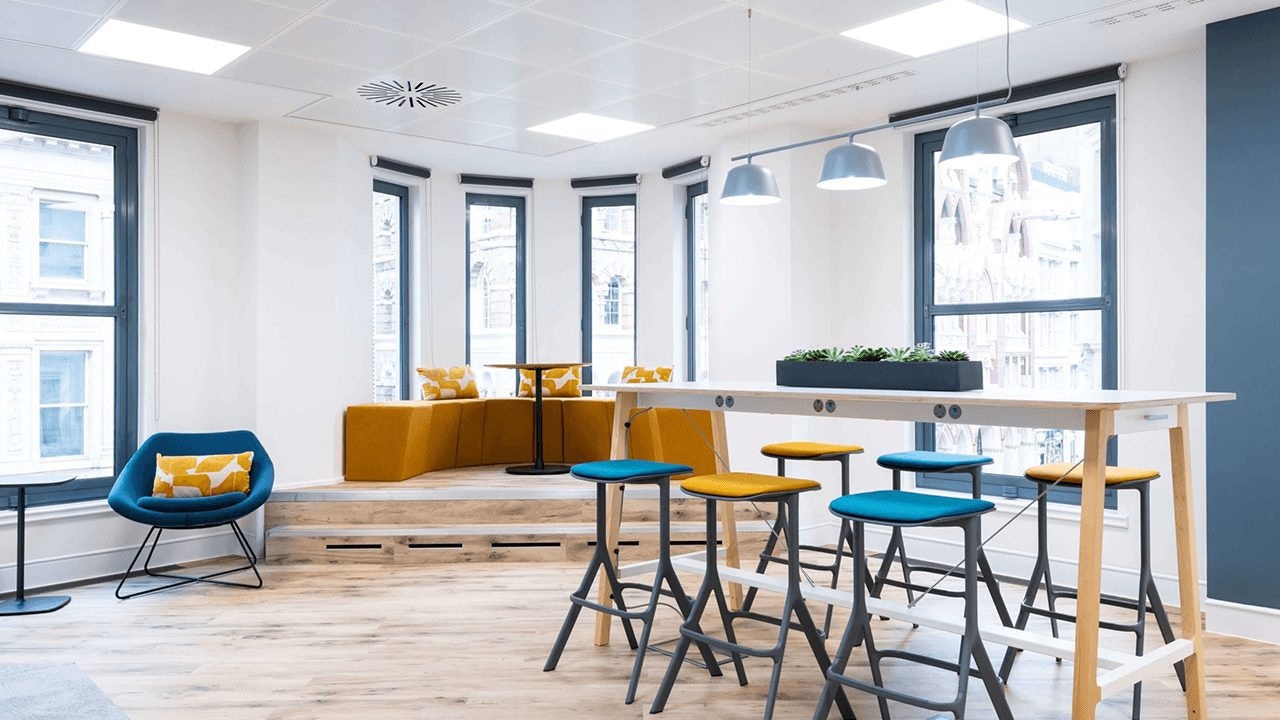

We all know how a bright sunny day lifts the mood. When it comes to workplace productivity maximising sunlight can have a significant role. A Harvard study showed that employees who sit near windows are 51% less likely to endure eyestrain from their computers than those who don’t. Similarly, it found that 47% of workers feel more tired without access to natural light or views of the outdoors, while 43% report feeling gloomy in the absence of natural light.
Natural light also enhances employee productivity and well-being by maximising natural light throughout the office space. Natural light not only illuminates but also invigorates the work environment, contributing to improved mood and energy levels.
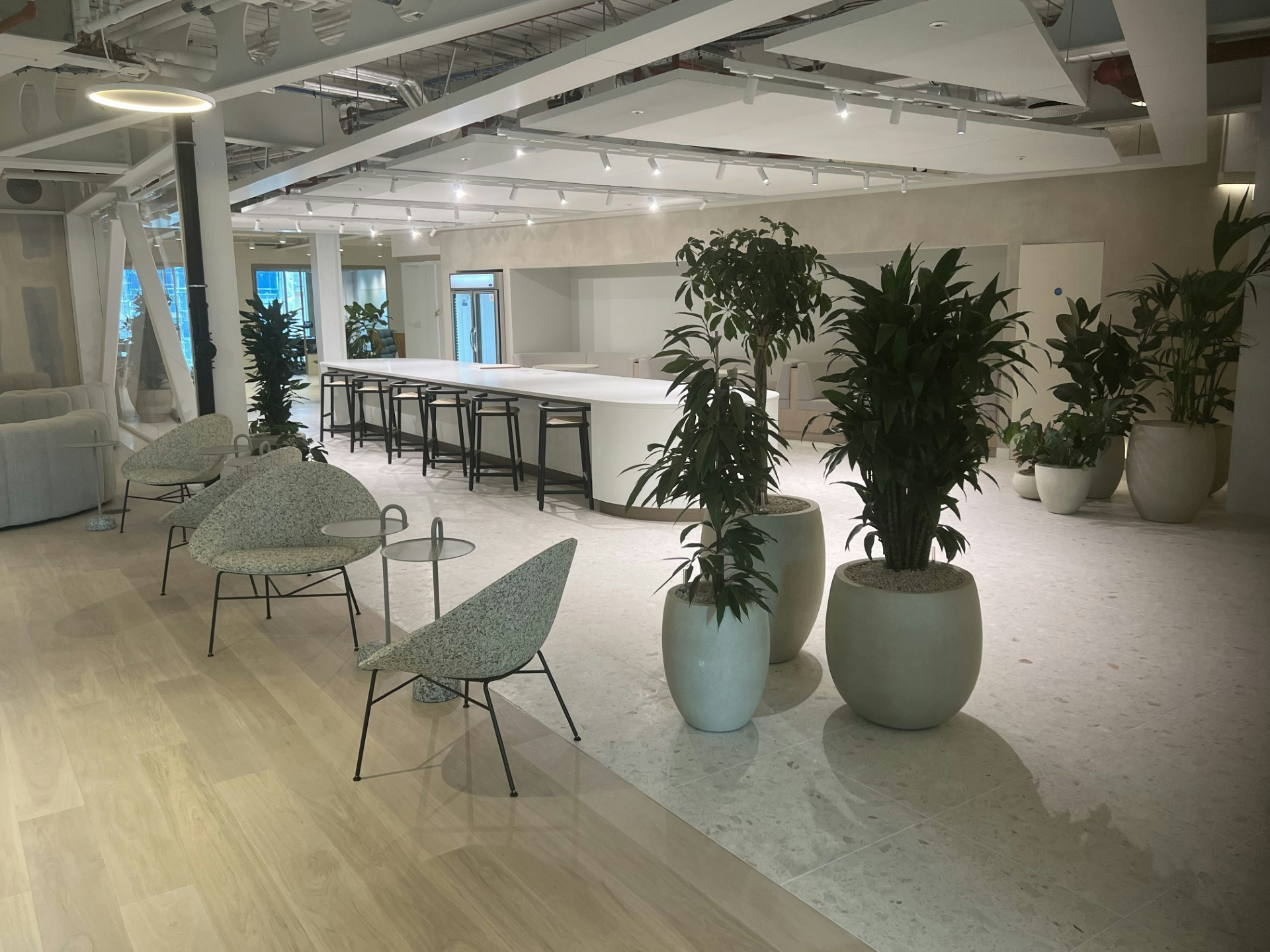
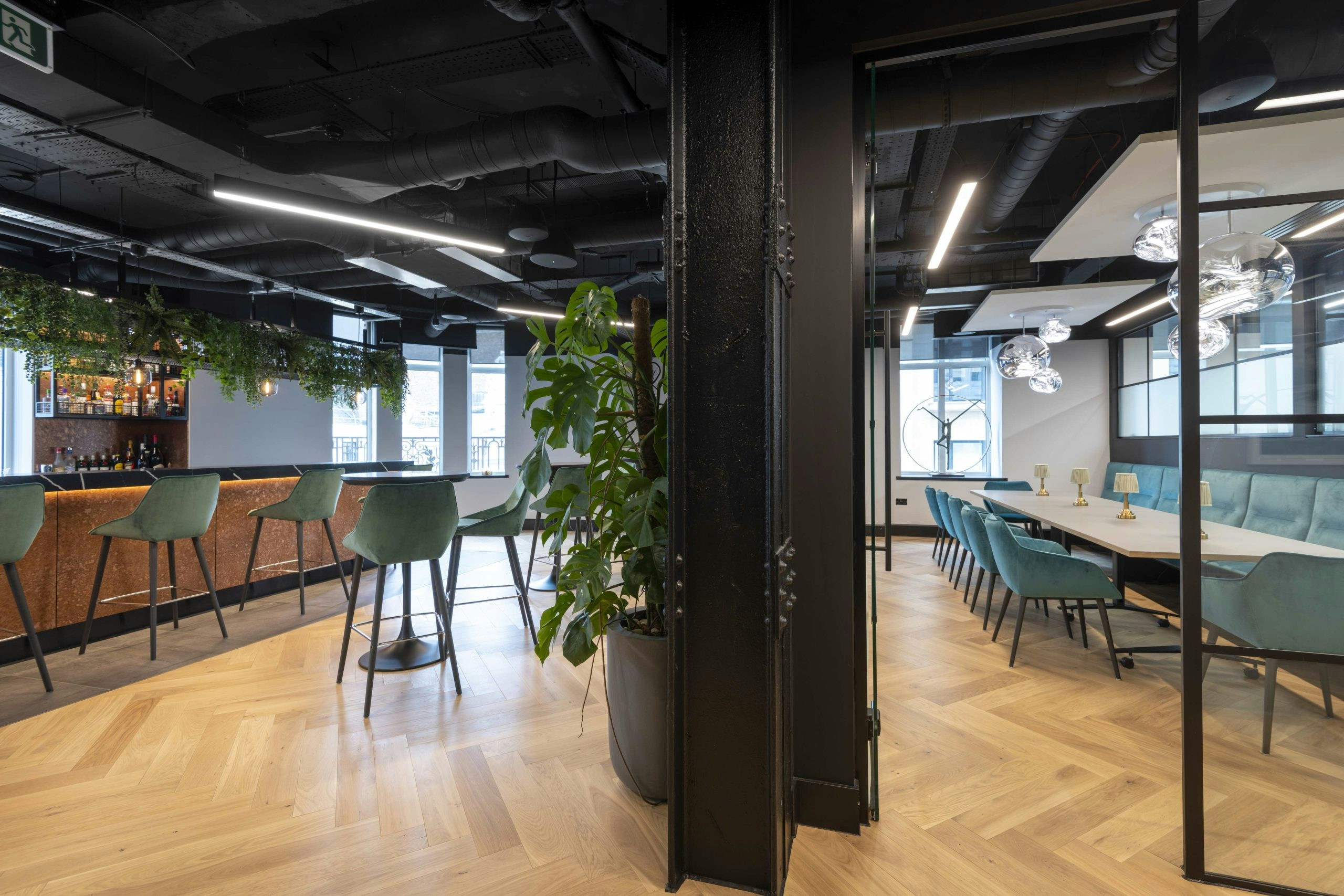
Fresh air has a crucial role in increasing productivity. About 20% of the oxygen that we breathe in is used by the brain for proper functioning and that in turn increases clarity of thought and helps to improve concentration. A year-long Harvard Public Health study across six contents monitored real-time air quality at office workstations and assessed cognitive performance through tests. It found that increases in pollutants like PM2.5 and CO2 were correlated with slower response times and reduced accuracy in cognitive tests. A similar study using remote sensors and surveys in combination also found positive effects when certain levels of carbon dioxide, VOCs, and humidity were maintained. There have also been studies showing just 2 hours a week in nature can boost health and improve well-being. Poor air quality can lead to headaches, fatigue and decreased cognition.
Conversely, fresh air contributes significantly to reducing fatigue, preventing illness, and improving overall concentration and productivity. You can elevate employee health and cognitive function by ensuring the air quality within your office is optimal. Enhance ventilation with state-of-the-art HVAC systems that pump in fresh outdoor air and use air purification methods. Adding live plants also helps to absorb airborne toxins and produce oxygen.
By prioritising these elements in your office fit-out, you can help safeguard the health and enhance the productivity of your workforce by providing them with a cleaner, fresher working environment.
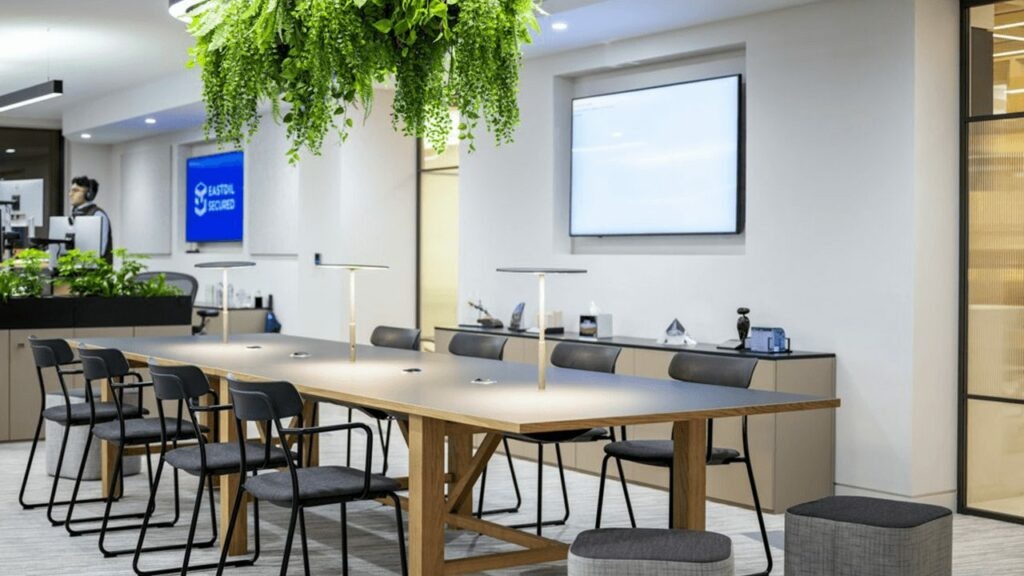
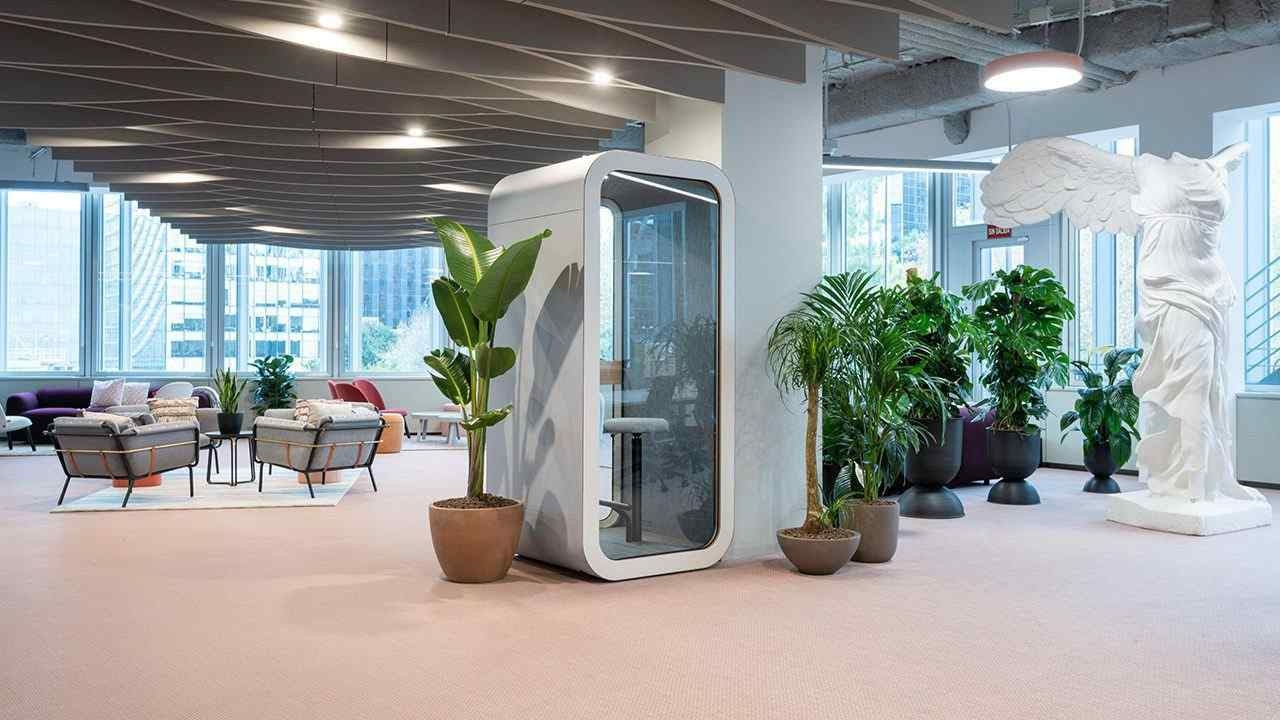
The push towards open-plan offices and hot-desking is reshaping how workspaces are utilised. With all the merits of open plan offices such as increased collaboration, enhanced transparency, and flexibility in space usage, they also have several drawbacks including noise and distractions, lack of privacy, and increased stress due to constant interruptions. One size certainly does not fill all, and while some employees thrive in a collaborative and energetic environment, others might find it overwhelming or distracting.
According to a Savills survey, 80% of UK workers operate in open-plan environments, with London leading at 89%. Despite this widespread adoption of open plan office space, only 12% believe that this layout boosts their productivity, and a significant 37% find it detrimental. Additionally, 45% of respondents feel that hot-desking hampers their efficiency. These insights underscore the need for office designs that not only foster collaboration but also accommodate the diverse needs of workers by incorporating quiet areas and flexible working arrangements to boost productivity effectively. Some of the
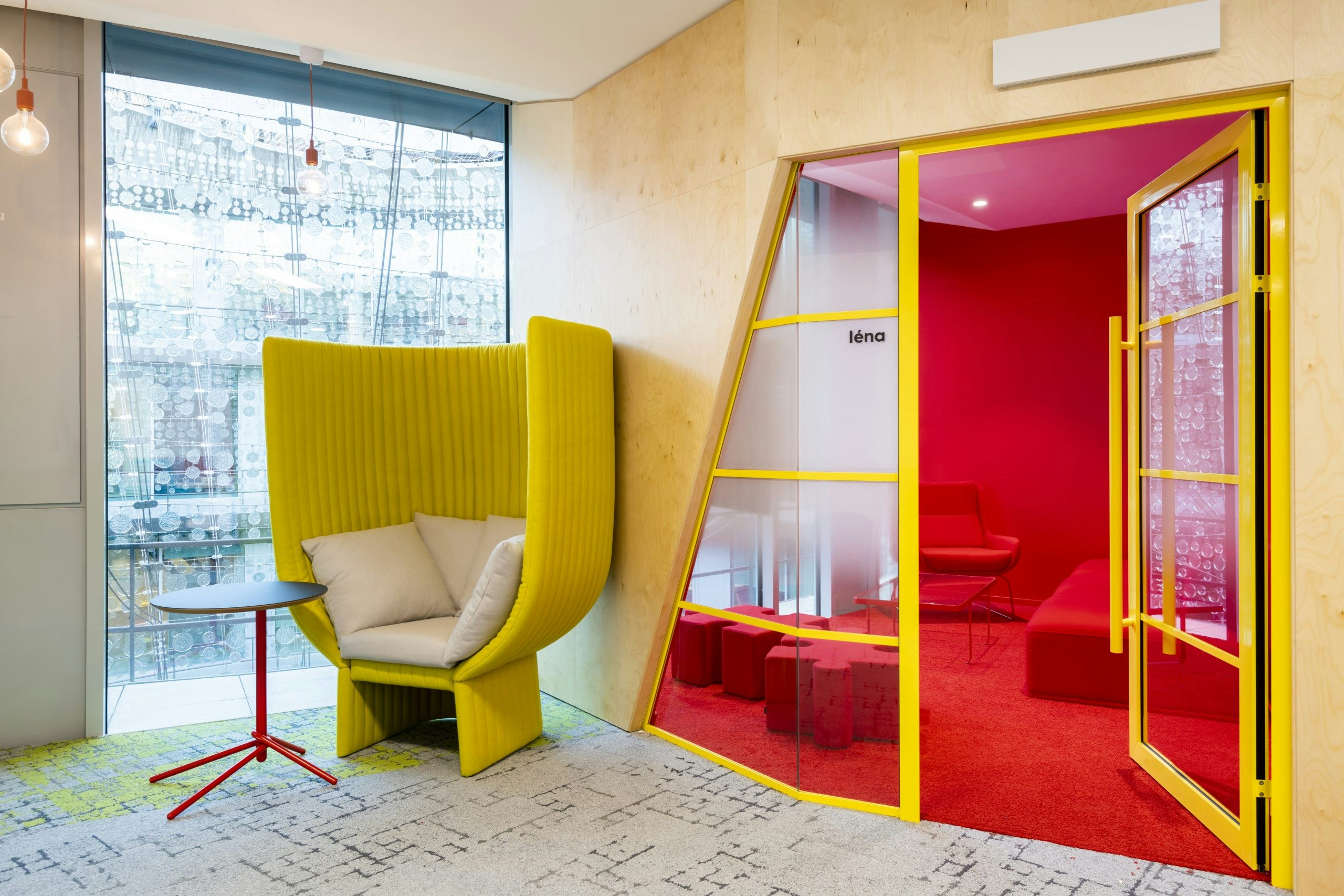

In office settings, the strategic use of vibrant colours can significantly influence mood and productivity. Studies have shown that areas adorned with warm, stimulating colours like yellow, orange, and red, spark creativity and foster lively interactions. These spaces become centres of dynamic exchange and innovative thinking, energising staff and enhancing their creative abilities. Conversely, spaces for individual work are often designed with cooler, soothing tones of blue and green, creating a calm and focused environment. These colours can help reduce stress and increase concentration, supporting tasks that require sustained mental engagement.
Colour can also play a role in cohesion. This integration of brand colours into the office décor, including walls, furniture, and artwork, not only strengthens brand identity but also elevates the aesthetic of a space. Our work for Criteo’s global transformation project, for instance, used a palette of bright yellows, reds and oranges to bring together the colours of the new company logo. Ensuring a visually cohesive environment that reflects the company’s values and culture through a thoughtful colour strategy contributes to making a more pleasant and productive workplace.
For some fascinating reading on the use of colour in the workplace see the list of articles below:

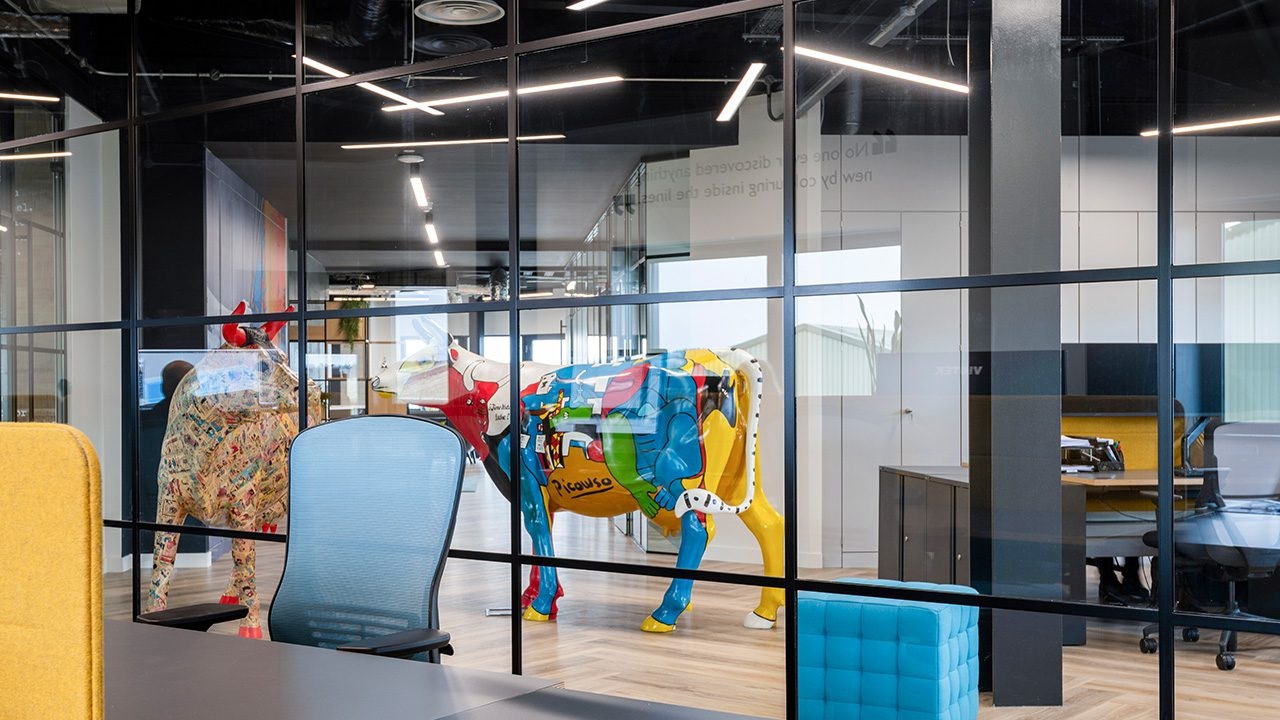
Integrating art into the workplace significantly boosts the aesthetic appeal and the intellectual atmosphere of the space. But it also has a key role in performance. A study of 2000 office workers, for instance, found that employees are up to 32% more productive when given control over the design of their workplace. Furthermore, a broader study across 32 companies, from food distribution firms to law firms, revealed compelling statistics: 78% of employees agreed that art in the workplace reduces stress, 64% felt that it boosts creativity, and 77% believed that it encourages expression. That impact extends beyond your employees, as one study shows with 94% of respondents feeling that artwork made the office feel more ‘welcoming’.
Thought-provoking art installations do more than decorate; they spark inspiration and provoke curiosity. Strategic placements of bold statement pieces or interactive sculptures serve as focal points in communal areas, while regularly rotated exhibits keep the environment fresh and stimulating. Additionally, by supporting local artists through dedicated gallery spaces enriches the cultural vibe of the office and promotes community engagement.
Here are a few points to consider when integrating artwork into your office space:
In essence, by integrating art into the workplace, companies can create an environment that not only looks good but also promotes a sense of well-being and productivity among employees and leaves a positive impression on visiting clients.
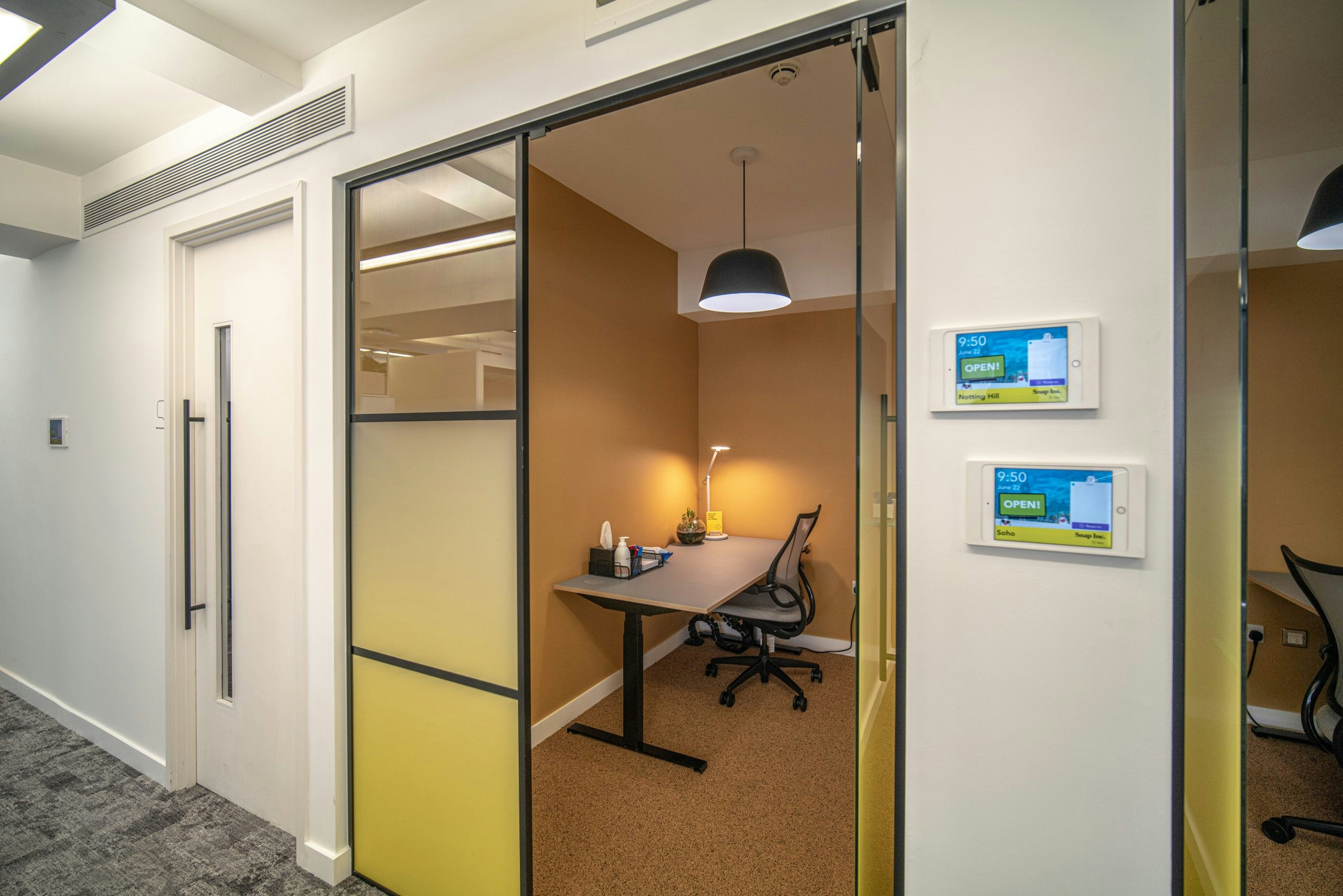

From virtual collaboration to the use of AI assistants, cutting-edge tech is reshaping the way we do work and improving productivity. Offices that take a proactive “technology-first” approach to designing or refurbishing their offices will stand to benefit from a range of productivity improvements such as automated workflows, enhanced communication, more streamlined meetings, and better management of precious work hours. Some of the current smart tech being used in offices include:
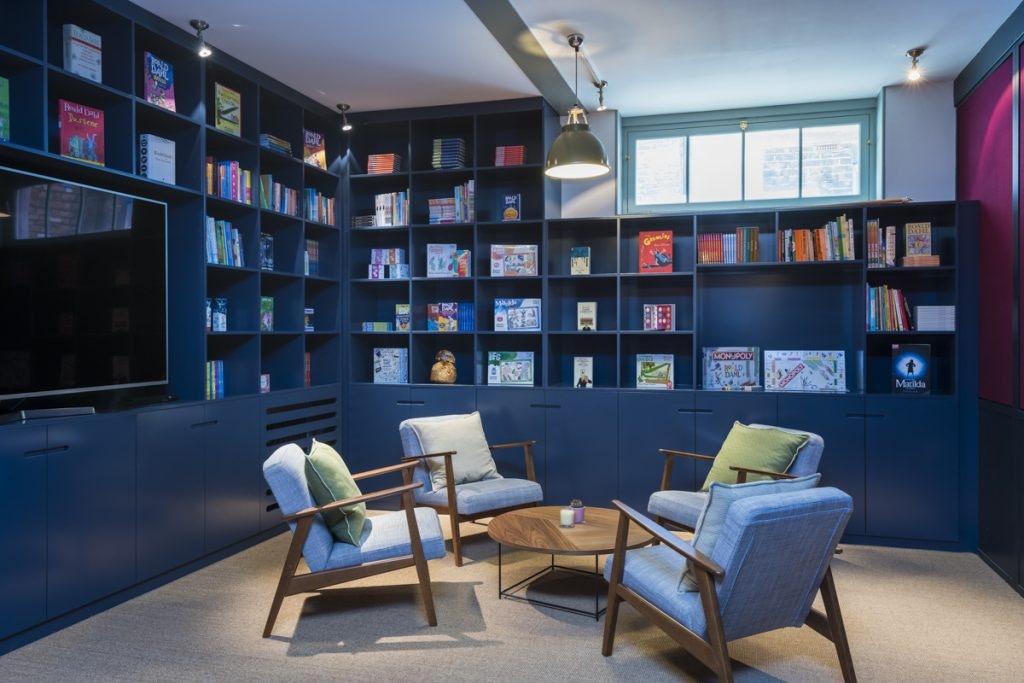
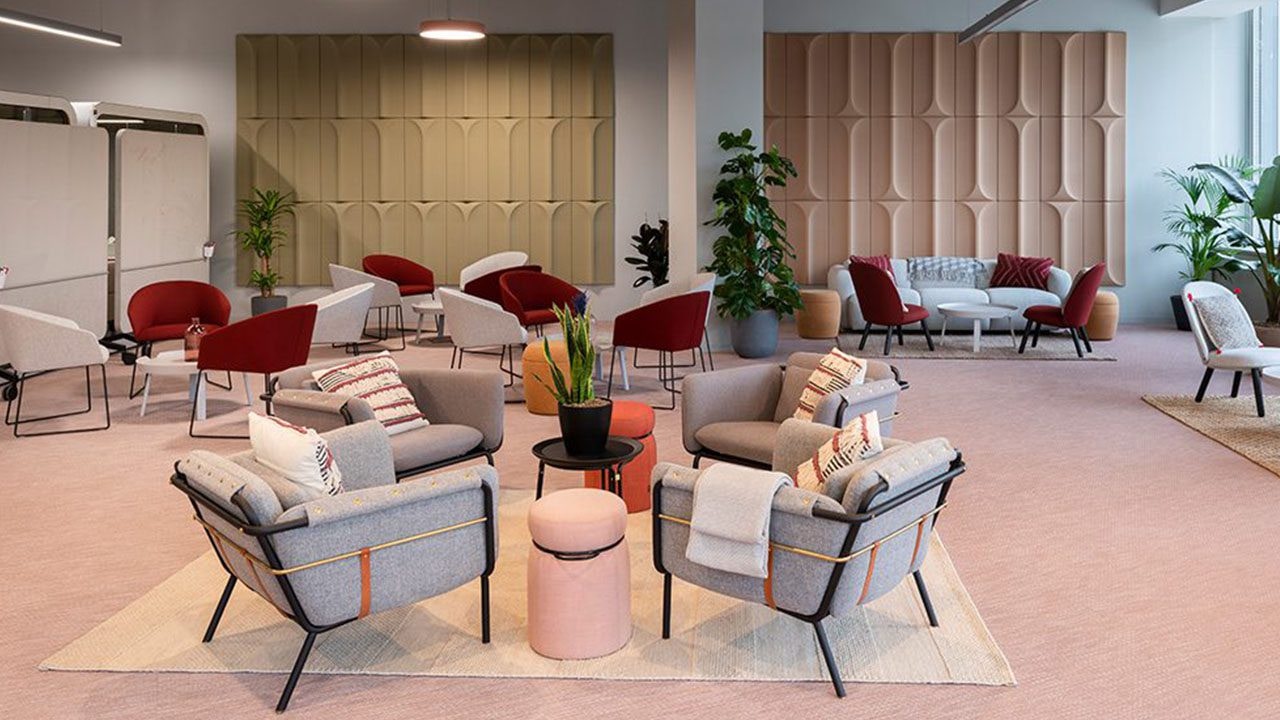
Integrating resimercial design – blending residential and commercial elements – into the workplace is increasingly popular as companies seek to make office spaces feel more comfortable and inviting. This approach helps ease the transition for employees accustomed to the comfort and flexibility of working from home.

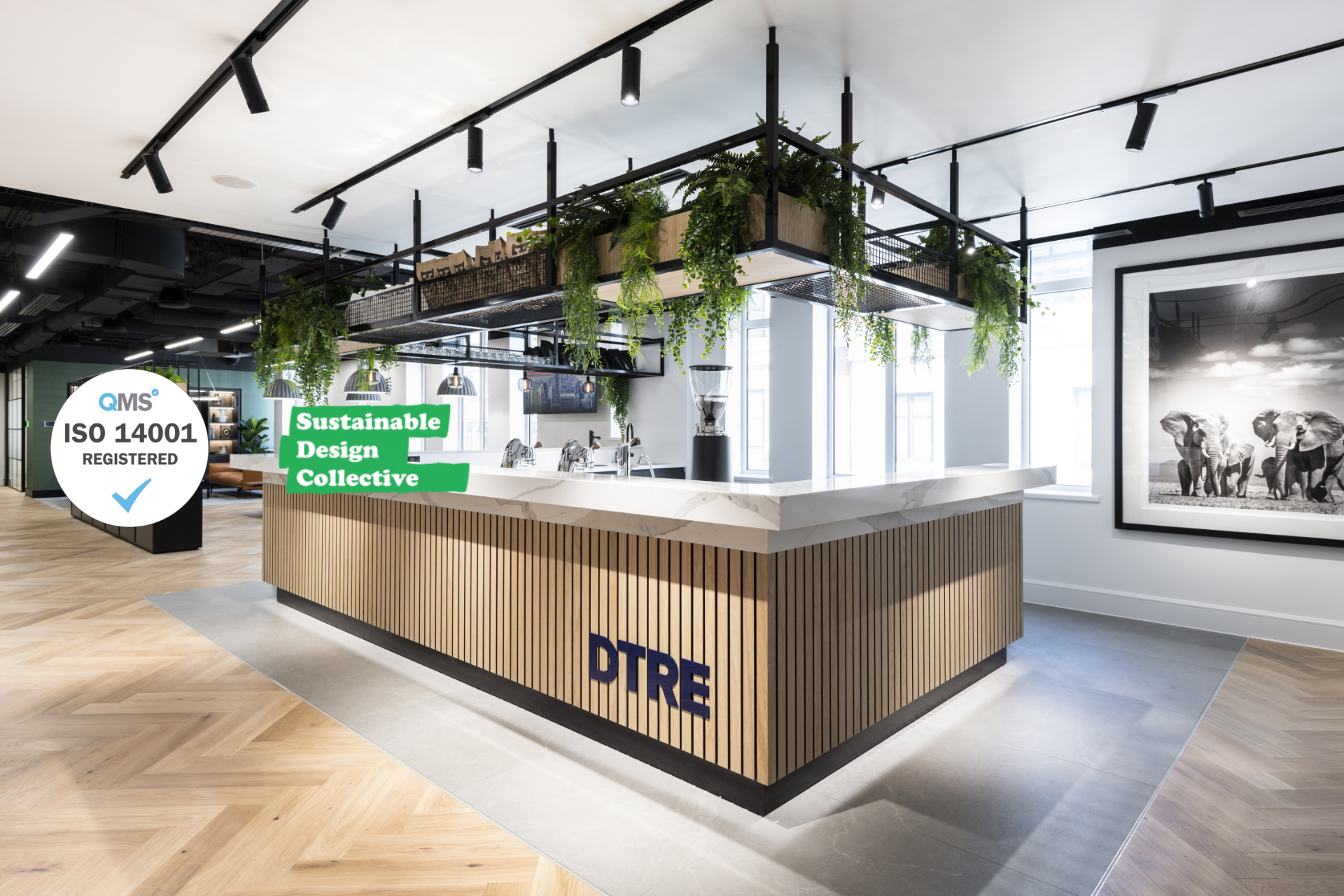
Incorporating biophilic design into the workplace reconnects humans with nature, which can boost well-being and productivity. Features like living green walls not only purify the air but also enhance the visual appeal of the space. Interior water features provide calming auditory sensations, while the use of wood tones, stone, and organic textures evoke the outdoors. Abundant natural light is prioritized through the use of skylights and large windows. Even small nature motifs throughout the office can spark mental restoration and reduce stress.

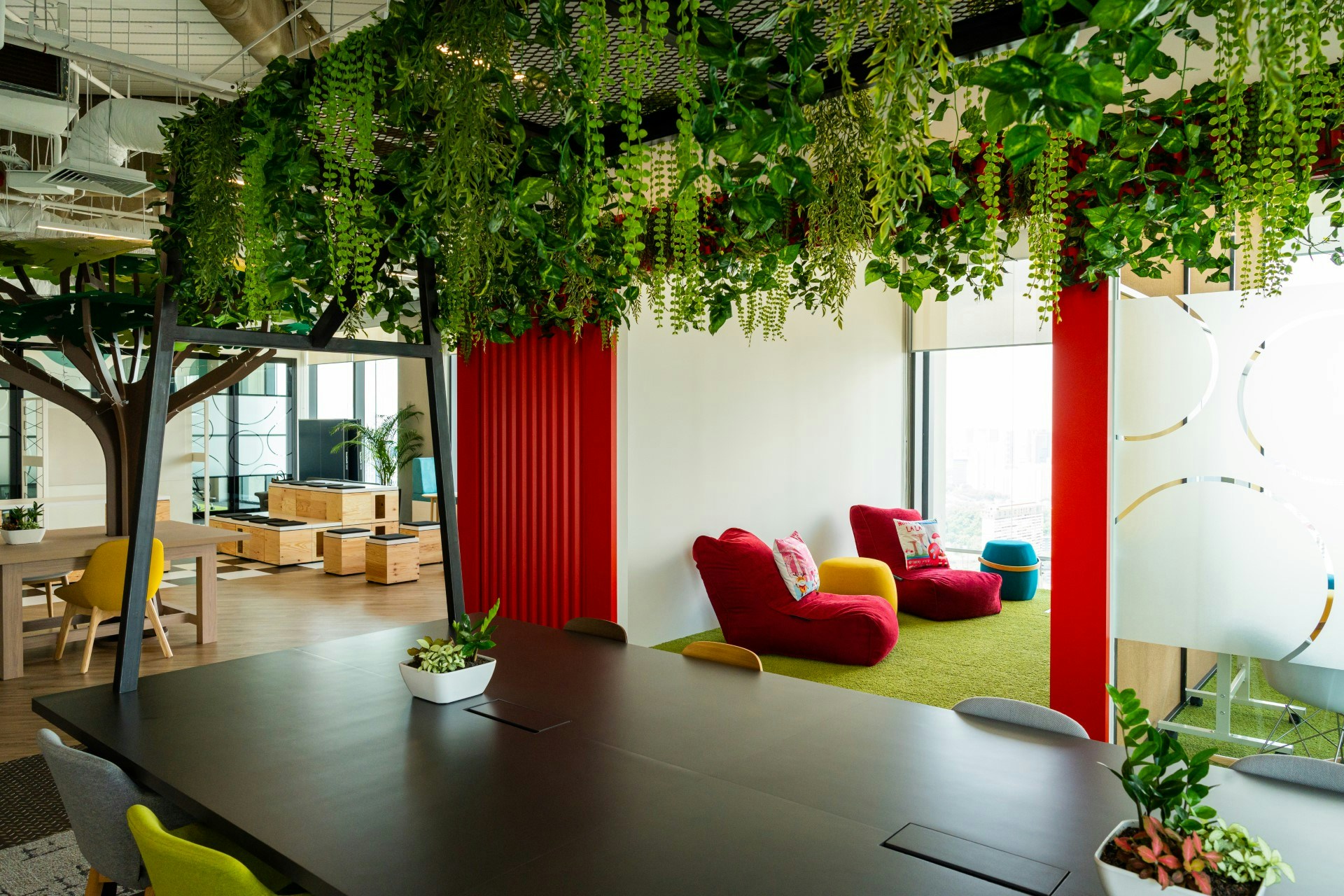
Employee wellness is holistically prioritized in the workplace through a variety of dedicated facilities and programs. Offices are equipped with fitness studios, massage facilities, and spaces for meditation classes to encourage physical and mental health. Nutrition counselling and farm-fresh cafeterias or micro-markets provide nutritious meal options to support healthy eating habits. Outdoor walking trails and zen gardens offer peaceful respites in nature, fostering relaxation and stress relief during the workday.
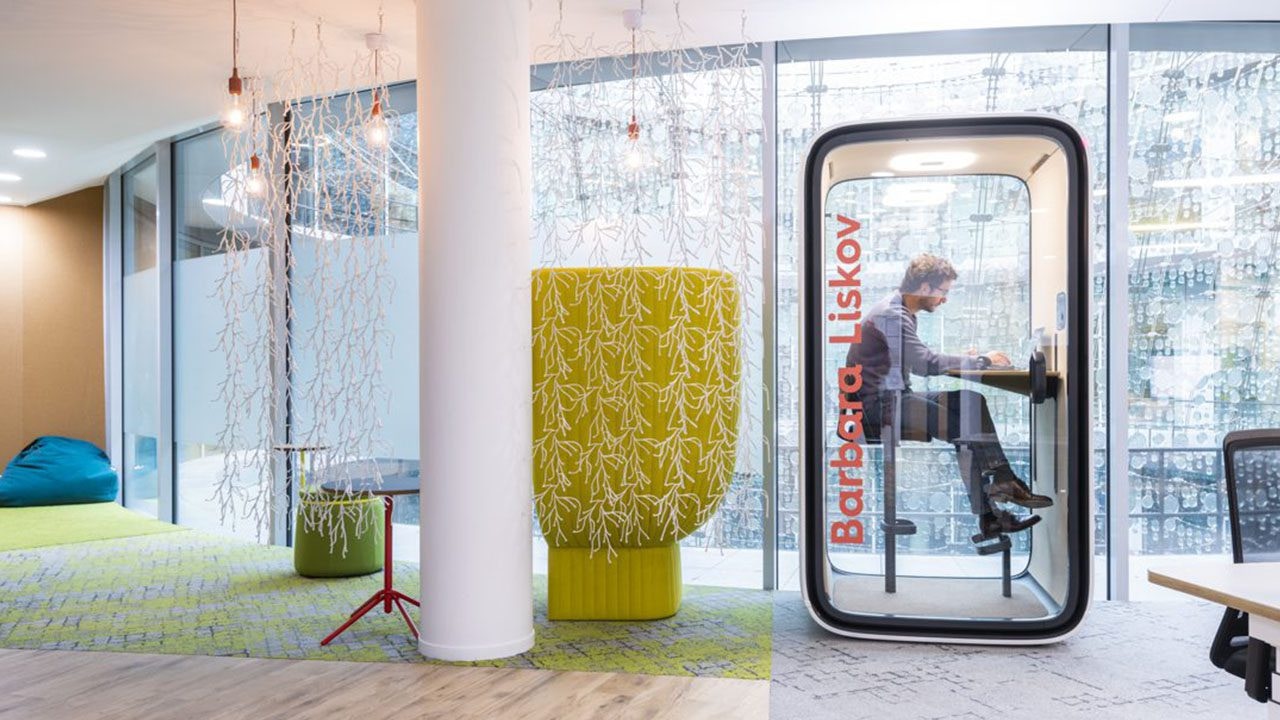
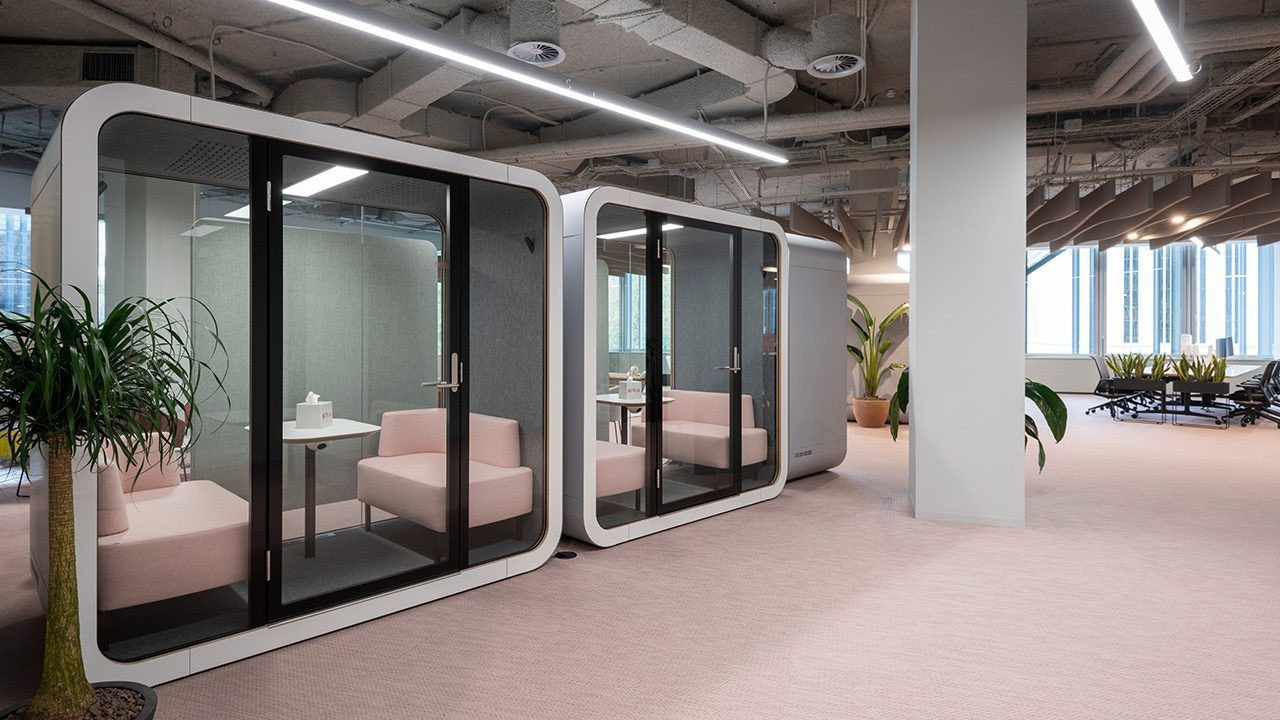
Beyond basic acoustic treatments, consider advanced solutions like sound masking systems that add a level of ambient noise designed to obscure speech, making open office environments more private and less distracting.


Consider the experience of visitors with welcoming reception areas, clear signage, and comfortable waiting areas. This helps in creating a positive first impression and can reflect well on the company’s brand.